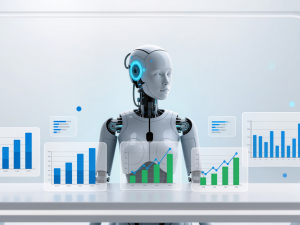Every generation of education has mirrored the world it grew up in. The first was about memorising facts from chalkboards. Then came the computer labs and the internet revolution. Education 4.0 brought automation, coding, and global connectivity to classrooms. But somewhere along the way, learning began to feel mechanical efficient, yes, but missing something deeply human.
That’s where Education 5.0 enters the picture. It’s not just about smarter software or faster networks; it’s about creating learning environments that understand, adapt, and feel. Instead of pushing technology as the centre of education, this phase places people back at the heart of it, blending AI, VR, and emotional intelligence to make learning both intelligent and empathetic.
This is learning that listens as much as it teaches. It’s about using technology to bring back curiosity, creativity, and compassion to classrooms.
So what exactly is Education 5.0, and why are experts calling it the most human era of digital learning yet?
What Is Education 5.0 — and How Did We Get Here?
Education 5.0 isn’t a single invention or policy shift it’s the natural next step in how we think about learning. To understand it, it helps to look back at how far we’ve come.
Education 1.0 was simple and one-directional: teachers spoke, students listened, and knowledge stayed within classroom walls. Education 2.0 began introducing collaboration and critical thinking, while 3.0 opened the doors to the internet and digital learning. Then came Education 4.0, where technology took the lead smartboards, online classes, and automation became the new normal.
But while Education 4.0 revolutionised access, it also revealed a gap. Students were learning through technology, not with it. Algorithms could deliver lessons but couldn’t inspire creativity or empathy. That’s what Education 5.0 aims to fix.
At its core, Education 5.0 is human-centred learning powered by intelligent technology. It keeps all the innovation of previous models AI, data analytics, virtual reality but uses them to serve human development, not replace it.
This model asks a simple question: how can education prepare people to thrive in a world run by machines without losing what makes us human?
It’s not about teaching students to compete with AI, but to work alongside it using emotional intelligence, ethical decision-making, and creativity as their strongest assets.
So when we talk about the Education 5.0 model, we’re really talking about learning that adapts to each person’s needs, values empathy as much as logic, and treats technology as a partner not a replacement in growth.
And that’s what makes this shift so powerful. It’s not just the next stage of digital learning, it’s a redesign of what education is supposed to mean in a world where both humans and machines are learning together.
What Makes Education 5.0 Different? The Human-Centric Shift
Education 5.0 takes everything we’ve built through technology automation, analytics, and virtual learning and adds something we’d nearly forgotten: heart. It’s where learning becomes personal again, shaped by empathy, curiosity, and connection.
At the centre of this model is the human-centric approach. Unlike previous systems that began with tools and then fit people around them, Education 5.0 starts with people their needs, emotions, and goals. Technology simply supports that mission.
Personalisation plays a huge role here. AI analyses how each student learns their pace, interests, and strengths to create a custom learning path. A student who grasps math visually, for instance, might see interactive 3D simulations instead of long equations. Someone struggling with writing might get targeted grammar support while moving ahead in other subjects. This level of precision ensures no one is left behind or bored waiting for others to catch up.
But what makes Education 5.0 truly unique is its focus on emotional intelligence. Schools are realising that empathy, teamwork, and resilience are just as critical as technical skills. Students learn to manage emotions, collaborate across cultures, and make ethical choices in a world powered by AI. It’s the balance between head and heart that defines this generation of education.
And while technology still powers it all, the intent has changed. The goal isn’t efficiency — it’s engagement. Classrooms are becoming spaces for active learning, where students co-create knowledge instead of passively receiving it. They debate, build projects, and connect real-world issues to what they study.
Education 5.0 isn’t asking teachers to become programmers or students to become robots. It’s about helping both rediscover the human side of learning, even in the most digital classrooms. In this model, technology finally plays the role it was meant to a quiet enabler that amplifies human potential.
And that’s where things get interesting. When artificial intelligence starts personalising learning, virtual reality turns lessons into experiences, and smart devices connect classrooms in real time education begins to look and feel completely different.
How Do AI, VR, and IoT Shape Education 5.0?
In Education 5.0, technology doesn’t just support learning it transforms how it happens. Artificial Intelligence, Virtual and Augmented Reality, and the Internet of Things are at the core of this shift, creating classrooms that are intelligent, immersive, and responsive.
Artificial Intelligence (AI) is the engine driving personalisation. It studies how each learner interacts with content, how long they spend on a topic, what they struggle with, and when they learn best. Based on that data, AI adjusts lessons in real time, offering hints, feedback, or alternate explanations. Think of it as a quiet teaching assistant that understands every student individually. AI tutors and chatbots can also answer questions instantly, freeing up teachers to focus on deeper discussions and one-on-one guidance.
Virtual Reality (VR) and Augmented Reality (AR) bring learning to life. Instead of reading about the solar system, students can explore it in 3D, walking among planets or observing how gravity works. History lessons turn into virtual field trips to ancient cities, while science students can perform complex experiments in safe, simulated labs. These experiences make learning active, emotional, and memorable exactly what Education 5.0 aims for.
Meanwhile, the Internet of Things (IoT) connects it all together. Smart devices in classrooms from tablets to sensors collect real-time data on engagement and progress. Teachers can see when students are losing focus, adjust pacing, or even predict when someone might need extra support. The result is a classroom that learns about its learners.
Together, these technologies shift education from reactive to proactive. Instead of waiting for exams to reveal problems, teachers and systems can spot them early and respond immediately. Students aren’t just learning facts, they’re part of an ecosystem that learns with them.
This is what makes Education 5.0 so distinct: technology isn’t front and centre; it’s woven into the background, quietly shaping a smarter, more human learning experience.
And as classrooms evolve, so do the people inside them. Teachers aren’t just instructors anymore, and students aren’t just receivers of information. Their roles and relationships are changing in profound ways.
How Are Roles Changing in the Age of Education 5.0?
In Education 5.0, the traditional boundaries between teachers and students begin to blur. The teacher is no longer the sole source of knowledge, and the student is no longer just a listener. Instead, learning becomes a collaborative one where both grow, question, and create together.
The teacher’s role shifts from instructor to mentor. Rather than simply delivering lessons, educators guide students through exploration, critical thinking, and ethical reflection. They help learners connect technology with purpose showing not just how to use AI or VR, but why it matters. In this way, teachers become facilitators of curiosity and creativity, helping students build skills that machines can’t replicate: empathy, emotional intelligence, and moral judgment.
For students, the transformation is even more exciting. They move from being passive participants to active creators of knowledge. Classrooms become labs for experimentation places where learners test ideas, build prototypes, and collaborate on real-world challenges. Whether it’s designing an app to solve a local problem or using VR to recreate historical events, students in Education 5.0 learn by doing, not memorising.
This shift also changes how success is measured. Grades alone no longer define achievement; creativity, teamwork, and adaptability take equal importance. The learning process becomes continuous, preparing students not just for exams, but for lifelong growth in a world that keeps evolving.
In this new setup, technology doesn’t replace human roles, it enhances them. Teachers gain tools to reach every learner more effectively, and students gain platforms to express ideas in ways that were once impossible. It’s education that grows through relationships between humans and digital working together.
And while the potential feels limitless, turning this vision into reality isn’t without its challenges. Implementing Education 5.0 on a global scale requires more than technology; it demands access, support, and a shared understanding of what truly matters in learning.
What Challenges Stand in the Way?
For all its promise, Education 5.0 isn’t something that can be adopted overnight. It demands not just new tools, but a complete mindset shift from how institutions plan budgets to how teachers and students view learning itself.
The first major challenge is cost. Technologies like AI, VR, and IoT require significant investment in hardware, software, and infrastructure. Many schools, especially in developing regions, still struggle with basic digital access. Without public funding or industry partnerships, Education 5.0 risks becoming a privilege rather than a universal standard.
The next hurdle is the digital divide. Not every student owns a device or has reliable internet access. If education becomes increasingly technology-driven without equal access, it could unintentionally widen gaps instead of closing them. True progress depends on inclusivity ensuring every learner, regardless of background, can benefit from these innovations.
Then there’s teacher readiness. Even the most advanced systems are only as effective as the people using them. Educators need hands-on training, time, and confidence to integrate new technologies meaningfully. Without that, AI tools may go unused, and VR labs might sit idle.
Finally, there’s the concern of balance. Relying too much on technology can risk turning classrooms into data points and dashboards. Education 5.0 must be careful not to lose the very essence it celebrates human connection. The goal isn’t to replace personal interaction with screens, but to make those interactions more informed, empathetic, and impactful.
These challenges are real, but not insurmountable. Every revolution in learning has faced resistance before becoming the norm. What will define Education 5.0’s success is how well we blend access, ethics, and innovation ensuring that the future of learning remains not just smarter, but also more human.
The Future of Learning: Building a More Human Tech
Education 5.0 isn’t just a new phase of learning, it’s a quiet revolution in how we define progress. It imagines a future where technology doesn’t outshine people, but helps them shine brighter. A future where machines handle the routine so humans can focus on what really matters: creativity, empathy, and purpose.
In the classrooms of tomorrow, lessons will be fluid and lifelong. A student could start a course in high school, build on it in college, and keep refining it throughout their career all through adaptive, AI-driven platforms. The cloud and data analytics will track skills, suggest learning paths, and help people stay relevant in a world that changes faster than any curriculum ever could.
But beyond the algorithms and smart devices, the real success of Education 5.0 will depend on how it nurtures humanity. Emotional intelligence, ethical decision-making, and social awareness will be the new cornerstones of success, not just technical know-how. Students will need to learn how to think critically about the systems they use, question bias in AI, and design technology that uplifts rather than divides.
In this world, learning doesn’t end with a degree. It evolves with every experience, every curiosity, and every challenge. And if technology continues to learn from us our values, compassion, and creativity then perhaps the future classroom won’t just be smarter. It will be kinder, fairer, and more human than ever before.
Because the true promise of Education 5.0 isn’t just that technology is learning to think like us it’s that we’re learning to teach it why it should.
FAQs:
1. What is Education 5.0 in simple terms?
Education 5.0 is the next stage of learning where technology and humanity meet. It uses tools like AI, VR, and IoT to personalise education, while focusing on emotional intelligence, ethics, and creativity helping students grow both academically and personally.
2. How does Education 5.0 differ from Education 4.0?
Education 4.0 was about integrating technology into classrooms, online lessons, automation, and global access. Education 5.0 goes a step further by making that technology human-centered. It doesn’t just teach digital skills; it builds empathy, collaboration, and critical thinking alongside them.
3. What technologies power Education 5.0?
Artificial Intelligence (AI), Virtual and Augmented Reality (VR/AR), and the Internet of Things (IoT) are at the core. AI creates personalized learning paths, VR brings subjects to life through immersive experiences, and IoT connects devices and data to make classrooms smarter.
4. How does Education 5.0 prepare students for the future?
It helps learners adapt to a fast-changing world by encouraging lifelong learning and real-world problem solving. Instead of memorizing information, students learn how to think, analyze, and apply knowledge in creative ways that machines can’t replicate.
5. Can technology ever truly teach empathy and creativity?
Not on its own but it can help. When designed thoughtfully, technology can provide safe spaces for reflection, teamwork, and expression. The human element remains at the core, guiding technology to support emotional growth rather than replace it.






